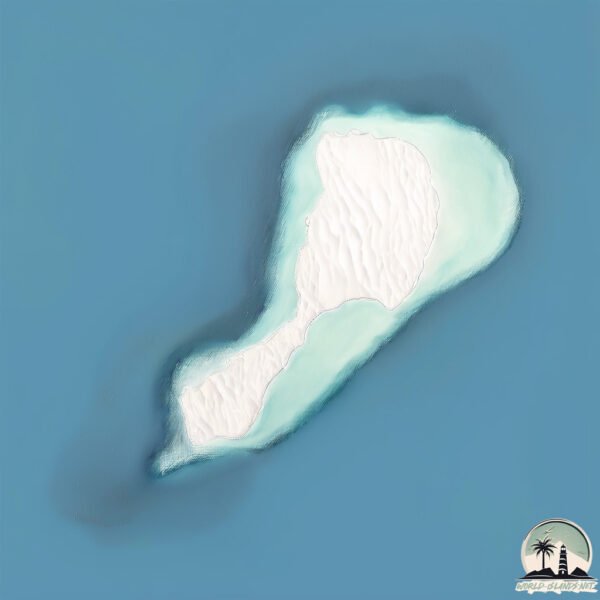Pagan

Welcome to Pagan, a Tropical island in the Philippine Sea, part of the majestic Pacific Ocean. This guide offers a comprehensive overview of what makes Pagan unique – from its geography and climate to its population, infrastructure, and beyond. Dive into the details:
- Geography and Size: Explore the island’s size and location.
- Climate and Weather: Weather patterns and temperature.
- Topography and Nature: Uncover the natural wonders of the island.
- Infrastructure and Travelling: Insights on reaching, staying, and making the most of your visit.
- News and Headlines: Latest News.
Geography and size of Pagan
Size: 48.7 km²
Coastline: 46.8 km
Ocean: Pacific Ocean
Sea: Philippine Sea
Continent: Oceania
Pagan is a Medium Island spanning 49 km² with a coastline of 47 km.
Archipel: Micronesia – A region in the western Pacific Ocean comprising thousands of small islands, known for their unique cultures, languages, and marine ecosystems.
Tectonic Plate: India – A major tectonic plate that initially moved northward at a rapid pace before colliding with the Eurasian Plate. This collision is responsible for the uplift of the Himalayas and the Tibetan Plateau.
The geographic heart of the island is pinpointed at these coordinates:
Latitude: 18.11653621 / Longitude: 145.76664029
Climate and weather of Pagan
Climate Zone: Tropical
Climate Details: Tropical Rainforest Climate
Temperature: Hot
Climate Characteristics: This climate is typified by heavy rainfall throughout the year, high humidity, and consistently high temperatures, leading to lush rainforests and rich biodiversity. Seasonal temperature variations are minimal.
Topography and nature of Pagan
Timezone: UTC+10:00
Timezone places: Australia/Sydney
Max. Elevation: 406 m
Mean Elevation: 129 m
Vegetation: Evergreen Broadleaf Forest
Tree Coverage: 49%
The mean elevation is 129 m. The highest elevation on the island reaches approximately 406 meters above sea level. The island is characterized by Hills: Gently sloping landforms with rounded tops, having a maximum elevation between 200 and 500 meters. Hills contribute to a varied landscape on islands.
Dominating Vegetation: Evergreen Broadleaf Forest
Characterized by dense, lush canopies of broadleaf trees that retain their leaves year-round. These forests are typically found in tropical and subtropical regions and are known for their high biodiversity. Pagan has a tree cover of 49 %.
Vegetation: 12 vegetation zones – Exceptionally Diverse Island
Islands with more than ten vegetation zones are among the most ecologically rich and varied in the world. These islands are akin to miniature continents, boasting an incredible array of ecosystems. The sheer range of habitats, from high peaks to deep valleys, rainforests to deserts, creates a mosaic of life that is unparalleled. They are crucial for conservation and ecological studies.
Infrastructure and Travelling to Pagan
Does the island have a public airport? no.
There is no public and scheduled airport on Pagan. The nearest airport is Saipan International Airport, located 325 km away.
Does the island have a major port? no.
There are no major ports on Pagan. The closest major port is SAIPAN, approximately 316 km away.
The mean population of Pagan is 0 per km². Pagan is Uninhabited. The island belongs to United States of America.
The name of the island resonates across different cultures and languages. Here is how it is known around the world: Arabic: باجان; Spanish: Isla de Pagán; French: Île Pagan; Portuguese: Ilha Pagan; Russian: Паган; Chinese: 帕甘島
Continuing your journey, Agrihan is the next notable island, situated merely km away.
United States of America is classified as Developed region: G7: Group of Seven – Major advanced economies, including Canada, France, Germany, Italy, Japan, the United Kingdom, and the United States. The level of income is High income: OECD.
News – Latest Updates and Headlines from Pagan
Stay informed with the most recent news and important headlines from Pagan. Here’s a roundup of the latest developments.
Please note: The data used here has been primarily extracted from satellite readings. Deviations from exact values may occur, particularly regarding the height of elevations and population density. Land area and coastline measurements refer to average values at mean high tide.
